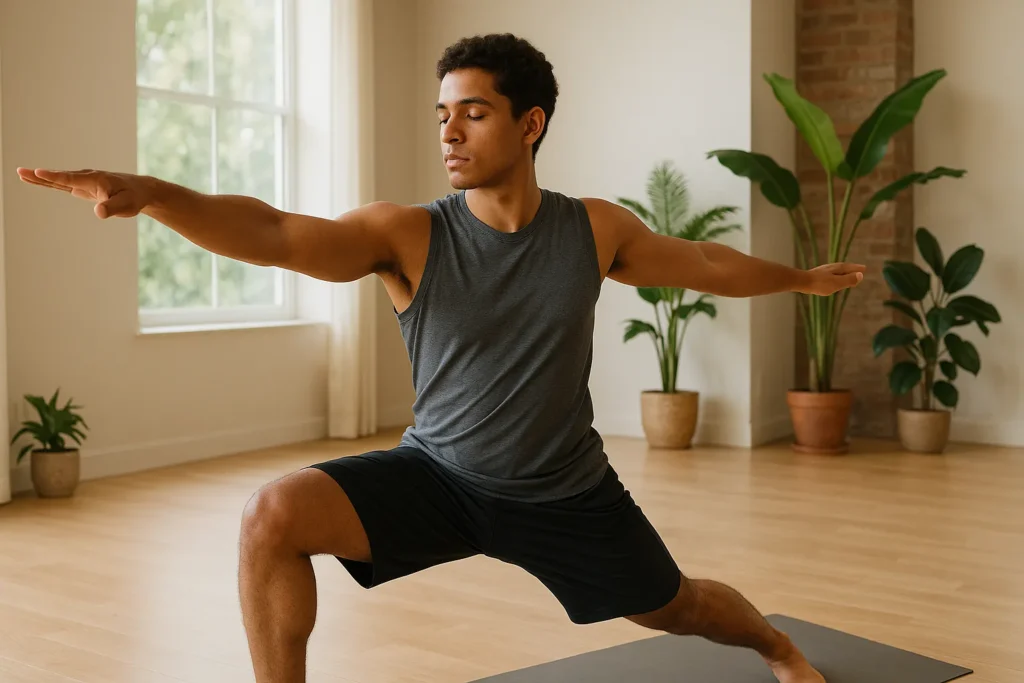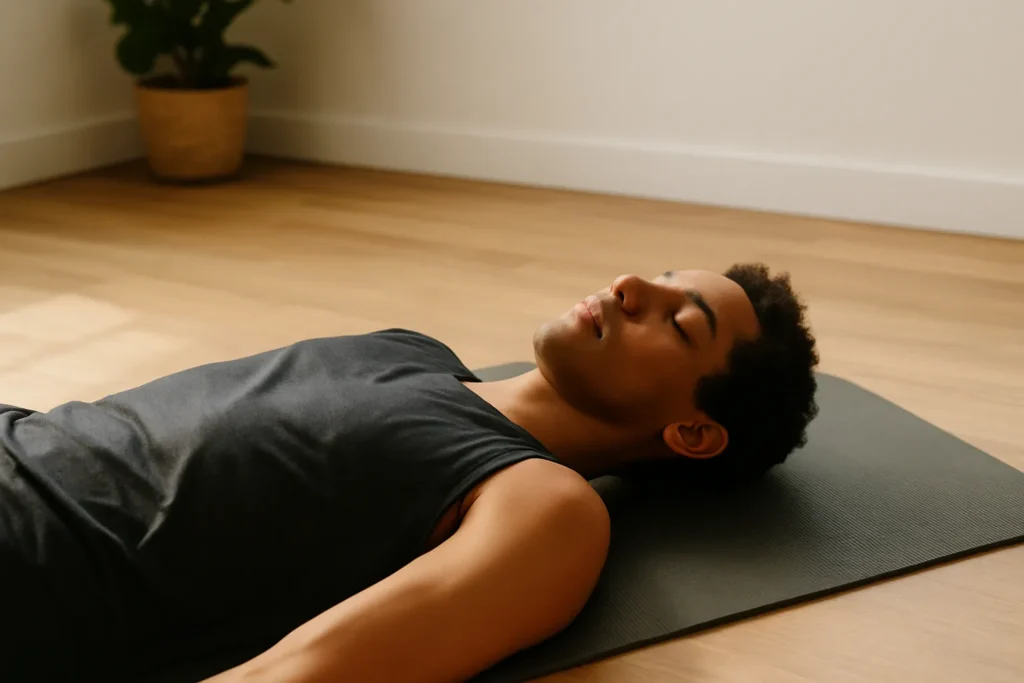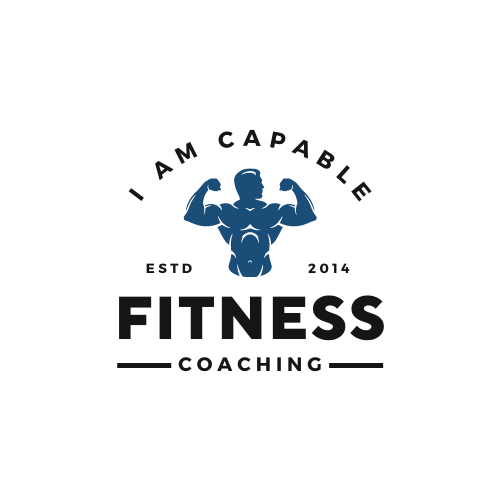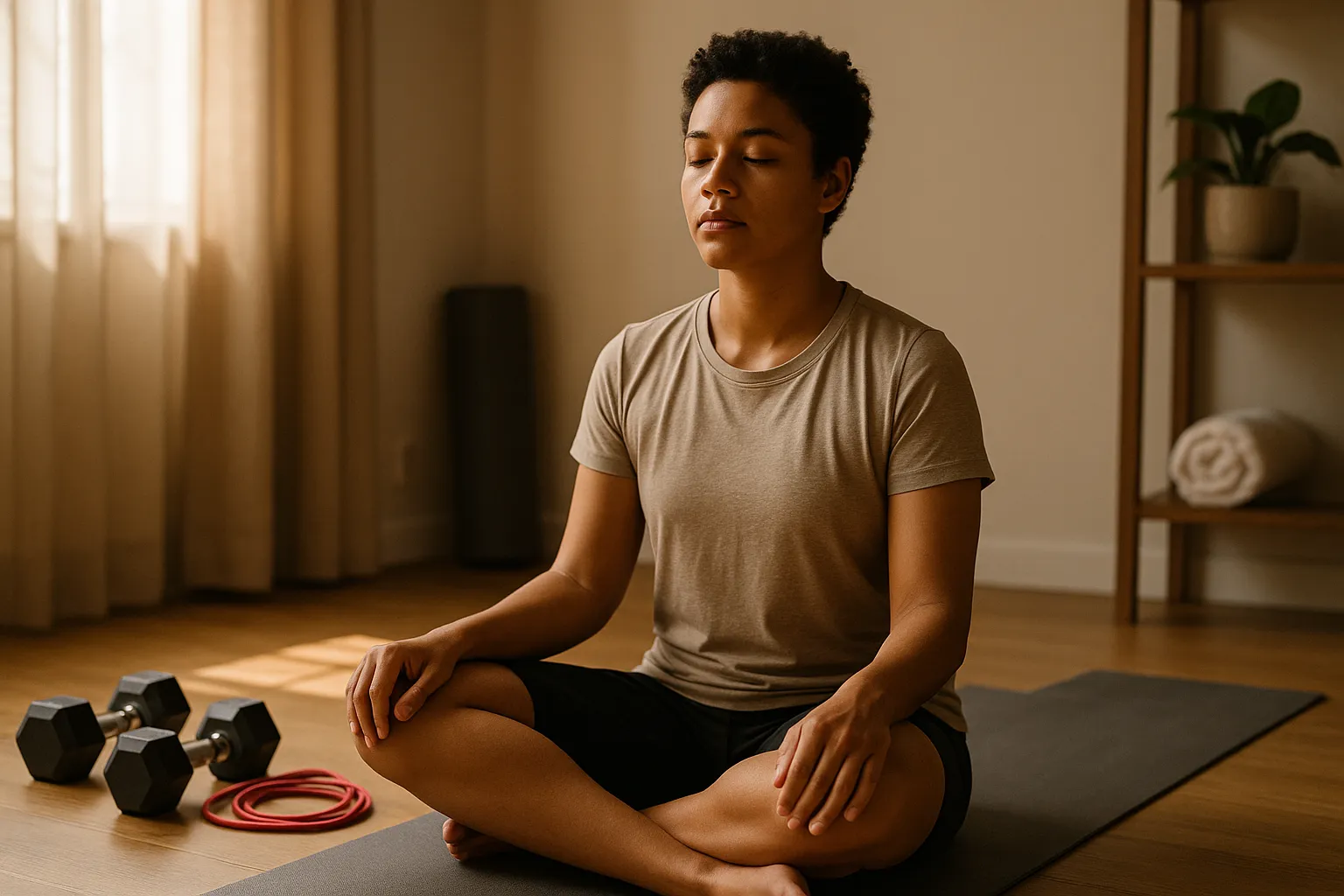Over 80% of people who start a fitness routine quit within the first month. That stat alone tells you something’s missing from the typical approach. You might be showing up, hitting your step goals, following the plan, but still feeling disconnected or stuck.
That missing part is your mind. Its absence in your approach causes a gap to develop because we don’t treat fitness as a full-body experience. When your mind stays stressed or distracted, your body struggles to perform at its best. Focus slips, motivation fades, and recovery takes longer.
In this post, you’ll learn how your mental and emotional state directly shapes your physical progress. We’ll cover the science behind the mind-body connection, share everyday mindfulness tools you can use right away, and help you build a more complete routine that supports lasting fitness and wellness.
Ready to get started? Let’s dive in.
Understanding the Mind-Body Connection
Have you ever had a workout where everything was smooth? Your body moved easily, your mind stayed focused, and it felt… right. That’s the mind-body connection in action. It’s the idea that your thoughts and emotions directly affect your physical performance, energy, and recovery. Fitness is mainly about awareness, presence, and how tuned in you are to what your body needs.
Ancient cultures followed this long before modern research caught on. In India, yoga trained people’s breath, mind, and muscles together instead of just stretching. That focus helped people stay calm and steady, even outside of practice.

Tai Chi in China used slow, intentional movements to promote inner strength and balance. Each motion encouraged mindfulness, helping the body and mind support each other naturally.
Today, science confirms the connection. Your brain and body talk constantly through nerves and hormones. That affects how you move, recover, and feel.
Focusing on a muscle while training can actually boost how well it works. That is the brain-muscle link in action.
Exercise also sparks mood-boosting chemicals like dopamine and serotonin. These neurochemicals reduce stress and improve motivation.
And then there’s embodied cognition. This idea suggests your body shapes your thoughts, not just the other way around. Your posture, breath, and movement all play a part in how you feel.
The Psychological Dimension of Fitness
So now that we’ve looked at how your body and brain work together physically, let’s talk about the mental game. Psychology plays a major role in how you train, stay motivated, and recover. Your mindset can push you forward or hold you back. Understanding how thoughts and emotions impact your performance is a huge part of long-term fitness and wellness.
Mental Focus & Goal Clarity
When your mind is clear, your training has direction. Vague goals like “get fit” don’t really do much. Clear, specific targets help you stay on track and make progress you can feel.
Instead of “I want to tone up,” try “I’ll do three strength sessions this week.” Small changes like that bring real focus. They also give your brain something solid to aim for, which boosts consistency.
Visualisation and Performance
Seeing yourself succeed before you even start helps your brain create those winning patterns. That’s why professional athletes use visualisation.
Picture your form, your breath, your result. It helps your body follow the plan with more confidence and precision. Even a 30-second mental walk-through before a session can sharpen your performance.
Emotional Balance & Resilience
Emotions shape your energy, focus, and how you respond to challenges during training. Some days feel smooth while others take extra effort. On the other hand, resilience means showing up even when things feel off. It is what keeps habits going through busy weeks, low moods, or physical fatigue.
When your emotions stay balanced, you’re more likely to stay consistent. That consistency builds confidence and long-term results.
Managing Stress, Negative Thinking, and Self-Talk
The way you speak to yourself affects how your body performs. Stress slows recovery, and negative thoughts drain your drive. A simple change like saying “I’m improving” instead of “I can’t do this” can help you stay focused.
Also, encouraging inner dialogue builds mental strength and supports physical progress. When your self-talk aligns with your goals, you create a healthier mindset and a smoother training experience.
Link Between Emotion and Workout Quality
Your emotional state shows up in your movement. For instance, frustration can make your form feel clunky. And calm breathing brings control and rhythm.
Feeling mentally steady helps your body move with purpose. The more emotionally aware you are, the more efficient your workouts become.
When your mind and body move in sync, every rep improves.
Mindfulness Practices that Boost Physical Performance
Mindfulness means tuning into the present moment. In fitness, it helps you stay aware of how your body feels, how you’re breathing, and how focused you are. This awareness supports better form, safer movement, and more effective training over time.
Mindfulness can improve your performance, boost recovery, and make workouts feel more rewarding. With practice, it becomes easier to stay grounded and avoid distractions that destroy your rhythm.

Types of Mindfulness Techniques
Mindfulness techniques are simple practices that help you stay present and aware during movement. They focus your attention on your breath, body, or actions so you don’t get distracted or slip into the autopilot mode.
These methods improve how you train and how you feel while doing it. When used consistently, they support both mental clarity and physical results.
Breathing Techniques
Focusing on your breath calms your nervous system and steadies your mind. Deep breathing before or during a session keeps you relaxed and centred, helping you perform with more control and less tension.
- Box Breathing: Inhale, hold, exhale, and hold again. Do each for four seconds. This creates a calming rhythm that prepares your mind and body for physical effort.
- 4-7-8 Technique: Breathe in for four, hold for seven, out for eight. This reduces anxiety and promotes smoother recovery.
Body Scans
A body scan brings attention to every part of your body from head to toe. It helps you catch areas of tension, fatigue, or tightness before they lead to injury or burnout.
- Seated Scan: Sit quietly and mentally check each part of your body. This builds body awareness and supports better posture and alignment.
- Lying Down Scan: Great for post-workout. It helps you wind down and notice how your body is recovering.
Movement Meditation
This involves slow, intentional movements with full focus. It improves coordination, strengthens your mind-body connection, and supports long-term fitness gains.
- Yoga Flows: Linking breath and movement in yoga builds balance, strength, and mental clarity.
- Tai Chi: This gentle practice combines movement and visualisation. It supports both flexibility and calm concentration.
Workout Integration Tips
Mindfulness can be a part of your routine anytime. It can be before, during, or after training. Even one mindful moment can make your session more effective and enjoyable.
Let’s see what you can do at any point of your routine.
- Pre-Workout: Take a minute to ground yourself. Deep breathing or a short body scan helps you shift gears from distraction to focus. This sets a calm and steady mindset.
- Intra-Workout: Stay present with each rep. Focus on how your muscles feel and how your breath flows. This increases muscle engagement and helps prevent poor form.
- Post-Workout: Slow things down with a short cool-down or stretch. Reflecting on how your body feels can help you spot progress or areas that need extra care.
- Weekly Plan: Pick one small mindfulness habit per session. For example, visualise before training on Monday, use breathing on Wednesday, and scan your body after stretching on Friday. These tiny shifts add up to a stronger fitness and wellness routine.
Training the Body Through a Mindful Lens
So far, we’ve looked at how thoughts and emotions shape your workout experience. Now it’s time to switch the lens and explore how the way you move can also shape your mind and body connection.

Training mindfully means noticing how each rep feels, where your energy is going, and how your body responds. It is about slowing down just enough to be present. This approach helps prevent injury, improves technique, and makes your training feel more purposeful.
Intentional Movement & Form Awareness
When you move with intention, you stay connected to your body. You notice whether your shoulders are rising during a press, or if your core is really supporting your movement. This is about being fully aware. And focused form activates the right muscles more effectively and gives you better results over time.
Mindless reps might fill the minute, but mindful reps build real strength.
Breaking Burnout Cycles
Burnout often creeps in when you’re pushing hard but not listening to what your body needs. Training non-stop leads to frustration, fatigue, and injury.
However, mindful training helps you notice when you need rest, when you can push a little further, and when it is time to switch things up. That awareness is what keeps your energy steady. It helps you train smarter and avoid hitting walls that feel impossible to get past.
Encouraging Sustainable Habits
Fitness that lasts comes from habits that respect your body and your lifestyle. All you need is consistency and awareness to get results, and not some brutal routine.
Mindful routines help you recognise when you’re improving, even if the scale doesn’t move or your time doesn’t drop. Small wins matter. When your approach is built on listening, adjusting, and pacing, you build something you can maintain for years.
Athlete Insights
Plenty of athletes have discovered that their best results didn’t come from doing things with more focus. For example, elite runners often report stronger performances when they pair breath control with mindful pacing. And in strength sports, many lifters use mental cues to visualise muscles working through each rep, which leads to more powerful contractions and better control.
These strategies work because they involve the mind as much as the body. That’s a practice anyone can adopt irrespective of their fitness level.
Nutrition and Recovery: The Hidden Side of Mind-Body Fitness
Most fitness plans focus on workouts, but nutrition and recovery carry just as much weight. Food provides fuel for training, and rest helps your body repair and build strength. Without proper support in these two areas, progress tends to slow down and fatigue sets in faster.
Mind-body fitness depends on what happens outside the gym as much as inside it. Mindful nutrition encourages better choices by helping you stay in tune with your body’s signals. And rest improves mood, focus, and overall performance. Together, they support both physical health and mental clarity, making your routine feel more balanced and effective.

Mindful Eating
Mindful eating means paying attention to your body’s signals, your food, and your habits. It can help you feel more in control and make smarter food decisions over time.
- Cues for hunger and fullness
Recognising real hunger helps you avoid eating just out of habit. Slowing down at meals gives your body time to respond, so you’re less likely to overeat. This builds a more natural rhythm with food. - Combating emotional eating
When emotions run high, it’s easy to reach for comfort food without thinking. A moment of reflection helps you recognise those emotional triggers. Asking, “Am I hungry or just overwhelmed?” creates space for better choices.
Rest & Sleep
Recovery gives your body the chance to rebuild, and your mind the space to reset. Quality sleep and restful habits are essential for maintaining steady progress and keeping energy levels strong.
- Impact on cognitive recovery
Sleep clears mental chaos, restores focus, and supports your ability to learn new movement patterns. Without enough rest, decision-making, motivation, and coordination often take a hit. Rested minds lead to sharper workouts. - Building sleep hygiene
Simple actions like winding down at the same time each night, reducing light, and avoiding screens can improve sleep quality. These signals help your brain prepare for deeper rest, which supports full recovery and better training results.
Next, we’ll explore how to create a personalised routine that blends these ideas into something that works for your lifestyle and goals.
Building a Personalised Mind-Body Routine
Every body is different, and so is every mind. A personalised routine helps you align your training, rest, and mindfulness with your real-life needs. It brings structure without forcing a fixed plan, making your approach feel more manageable, sustainable, and enjoyable.
When you customise your routine to your current state, both physically and mentally, you get more out of every session. It also helps you avoid burnout and stay consistent over time.
Self-Assessment Checklist
Before building a routine, it’s helpful to take a quick look at how you’re doing. This self-check highlights strengths and areas that may need more attention, such as stress levels, energy, or recovery habits.
- How does your body feel most mornings? (Tired, energised, stiff?)
- How often do you feel mentally distracted during workouts?
- Are you recovering well between sessions?
- Do you eat when hungry or when stressed?
- How would you rate your sleep quality this week?
Custom Planning
Once you’ve identified the gaps, you can make a plan that supports your lifestyle, fitness level, and energy flow. This planning adds intention to your week and makes each session more focused and effective.
- Monday: Set a goal and visualise your week during a light workout. Use this time to mentally walk through your sessions, focus on one intention, and reconnect with your motivation.
- Wednesday: Add a mindful pause mid-session (breath check or body scan). Take 60 seconds to notice your breath, posture, and tension. Adjust where needed to bring your attention back to the present.
- Friday: Reflect after training with stretching and slow breathing. Let your body cool down and note how it responded to the week. This helps track progress and spot areas that need care.
- Weekend: Review how your body feels and prepare meal plans, or rest accordingly. Use what you’ve noticed to decide whether to recover fully, move lightly, or organise your food choices for the week ahead.
Real-Life Success Stories
When people start understanding their bodies and making intentional choices, the benefits go deeper. They usually show up in everyday life too, improving mood, sleep, and overall well-being. Real stories help make all this feel less abstract and more doable. These examples show how small changes in awareness, mindset, and movement led to lasting results.

- James began using breathwork before strength sessions and noticed fewer injuries and more focused lifts.
- Grace started doing a short body scan twice a week and realised she was pushing through fatigue without even noticing. By adjusting her rest days, she felt more energised, slept better, and actually looked forward to workouts again.
- Abbey, a beginner who used visualisation to prepare for each workout, said it reduced gym anxiety and helped build her confidence over time.
- Oliver shifted his focus from chasing big performance goals to being fully present in each session. He started journaling how his body felt after every workout and spotted patterns in stress, soreness, and energy. That small habit led to smarter training decisions and quicker recovery, which made his routine far more enjoyable and productive.
What stood out across all stories was how simple changes in awareness created meaningful impact. It was the habit of checking in, mentally and physically, before, during, and after training that ensured success. That mindset helped them stay consistent, reduce stress, and enjoy the process more. It made fitness feel less like work and more like self-care.
Your Mind and Body Deserve to Work as One
When your focus is clear and your body feels supported, you build strength, endurance, and balance that lasts. This is the mind-body connection that plays a direct role in how consistently and effectively you train. This approach helps you stay grounded, make smarter choices, and enjoy the process more.
In this article, we explored how mental focus and emotional balance influence physical performance. You learned about mindfulness techniques like breathwork and body scans, how to recognise stress, and how to build routines that support sustainable progress. We also covered the role of nutrition, recovery, and rest in creating a well-rounded fitness lifestyle.
If you are ready to explore more practical ways to improve your fitness and wellness, visit us at I am Capable Fitness Coaching. We have Workout Plan Memberships to help you achieve your fitness goal.
Your mind and body are already trying to work together. Now is the time to let them.

